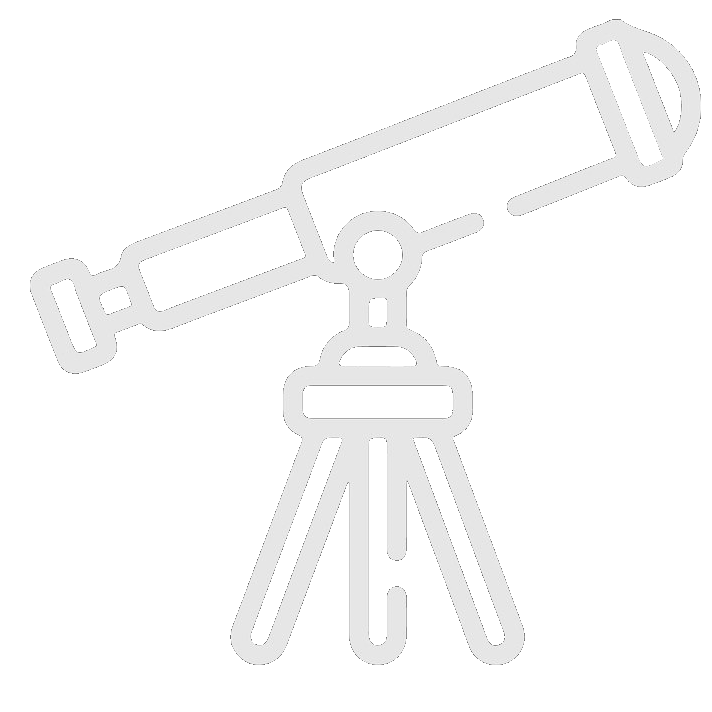I stagger toward my boss on my way to the window. I’m looking out and up the one near his desk, head craned to the sky. Out there, clear teal turns to deeper blue in a cloudless rolling gradient.
My boss asks if I need something.
Je kan se saturn! (I can see Saturn)
Er det rigtigt? (Is that right?)
Ja, så skal jeg hjem. (Yeah, so I’m going home!)
In the Danish autumn, the sky now darkens at the end of the workday. I hop on my bike and rush home. I’m setting my telescope up at Svanemøllen station.
At the halfway point of my ride, I cross a long pedestrian bridge over a series of railtracks. At the top, I can see the horizon nearly 360 degrees around – out to the skyline, out to the Øresund. The sunset gradients of orange and pink stretch out to the vanishing point. I try not to rush this part.
I burst in the door, take 10 minutes to cool down, then turn around, throw the telescope bag on, and walk to the station.
On my way there, I fix my gaze on Saturn to the Southeast. I often think about the lighting on my walk there. These streetlamps, often found on smaller roads, are pleasant. They’re not too bright, not too tall, and they have reflectors on them so you can’t directly see the LEDs. Over by the station, the lighting is more modern. High poles and spotlights give the impression of higher security. If you glance up at them, even for a moment, you’ll get spots in your eyes.
I walk past the station entrance. Once I’m on the other side, I set the bag down and deploy the tripod. But then I realize I’ve lost sight of Saturn! I stare patiently into the sky. I curl my fingers in the shape of binoculars to block the glare, and scan around. This helps more than I expected, but I still can’t find the planet. So I fold the tripod, grab it in my hand, and walk down a small utility road that runs down a hill. There’s less lights over there. This is what I’m resorting to. I can’t see Saturn from here, so I’m trying to walk there.
After I cross the street, away from the station lighting, I am able to pick up Saturn again. Since I walked toward the planet, all I have to do is turn around 180 and walk back toward the street corner, then turn around again to face it. If I need to remember how high the planet is, I can hold my palm out to the horizon for a fixed angle reference. It’s possible to find a planet this way even with tons of glare.
Back under the glare, I find Saturn again. Is it getting cloudy?
My neighbor Melissa and her kids stop by on their way home. They’re with her mom, who still hasn’t looked in the telescope. As we’re chatting, I drop in the eyepiece and turn on the viewfinder. Then I aim through the target for Saturn. We’re viewing at 120X tonight.
Hmm, but where is Saturn now? I look up – yes, there are a few scattered clouds forming. Toward Sweden, I see more. OK, it’s completely cloudy now. I tell them that maybe we’ll see it in 5 minutes.
Many nights are like this. In northern European winter, clouds can form spontaneously as the temperature drops. Melissa’s family moves on to tennis practice. I linger in the street, watching the thickening formations. After 20 minutes, my endurance wears. I pack the telescope and head home for dinner. Some stars still twinkle directly overhead, but the cloud cover is piling on over the ecliptic.
I’m absolutely certain that it will be clear by the time I’m done eating.
I eat dinner. I change into more comfortable clothes. I pop my head out the window for the third time today. White pinpoint stars against black.
Good weather is rare in the winter.
Do I go back out?
Svanemøllen is a commuter rail station. There won’t be many people there anymore. On a monday? I’d have to go at least to indre by to find people. The temperature has also plunged. And I already wrote some people who wanted to meet me that I cancelled from weather.
If you want to catch clear skies in the Danish winter, you have to be prepared. But it can be exhausting to chase the sky like this. I decide to conserve my energy.
I’ll try again on Thursday.

